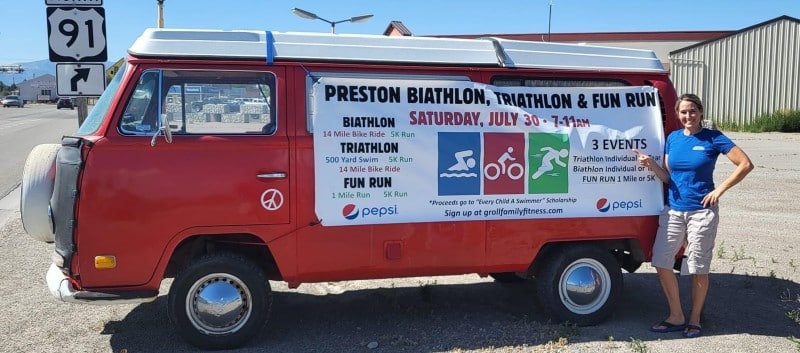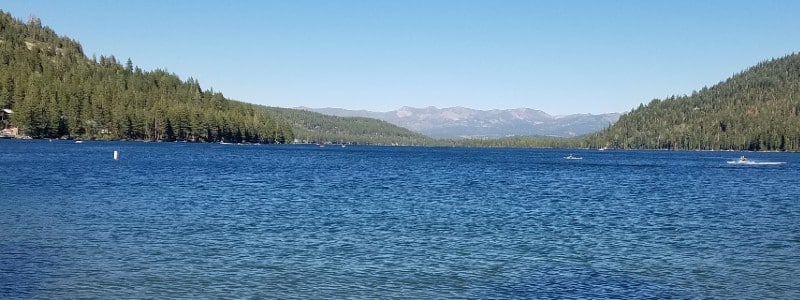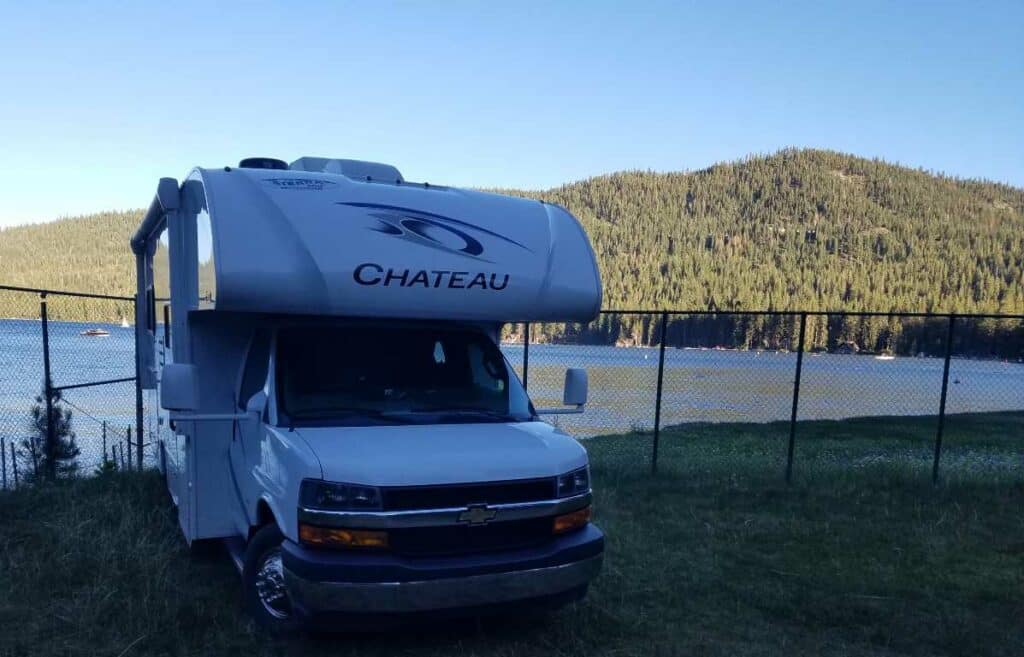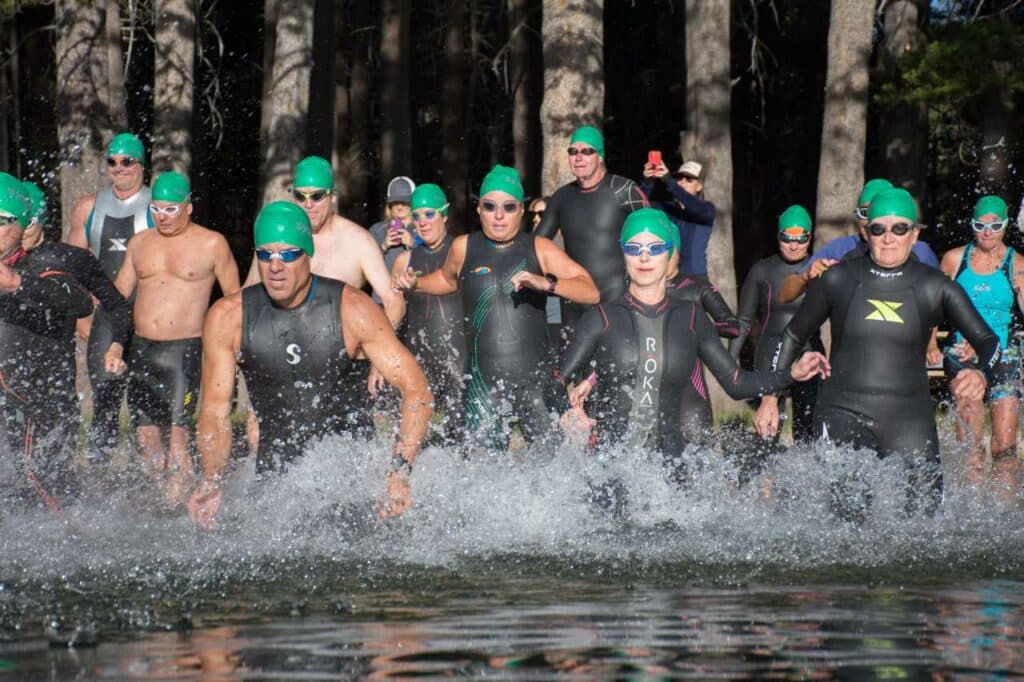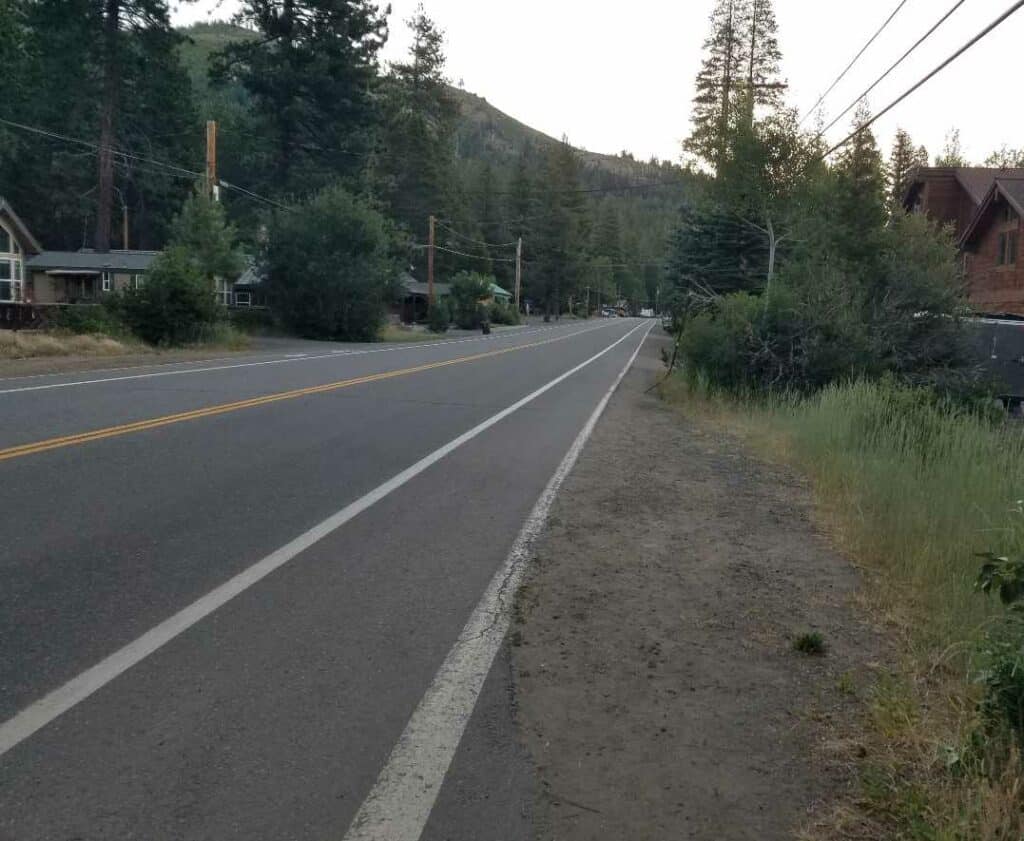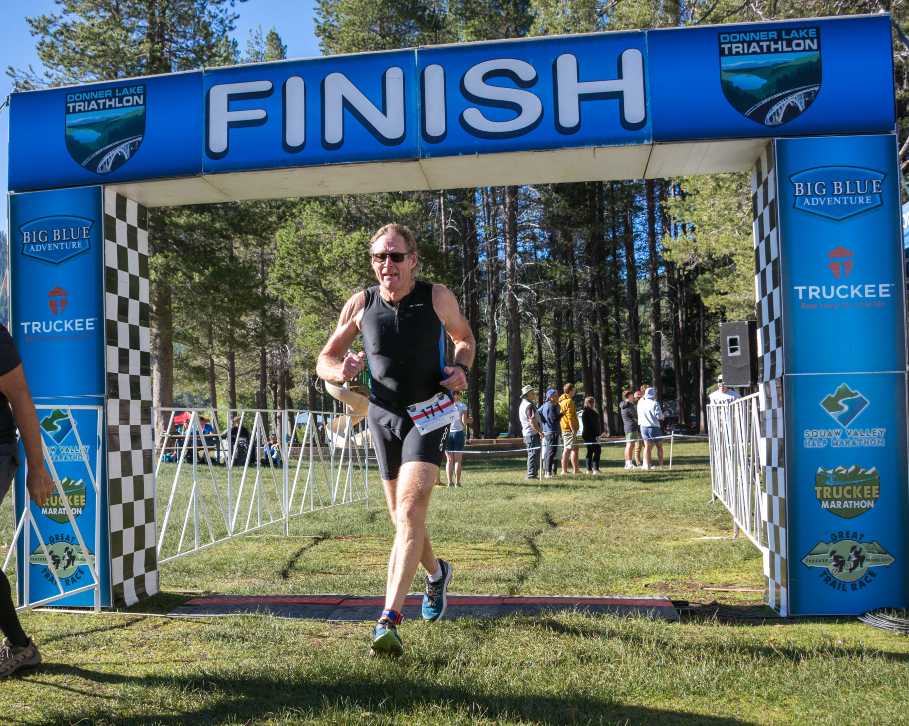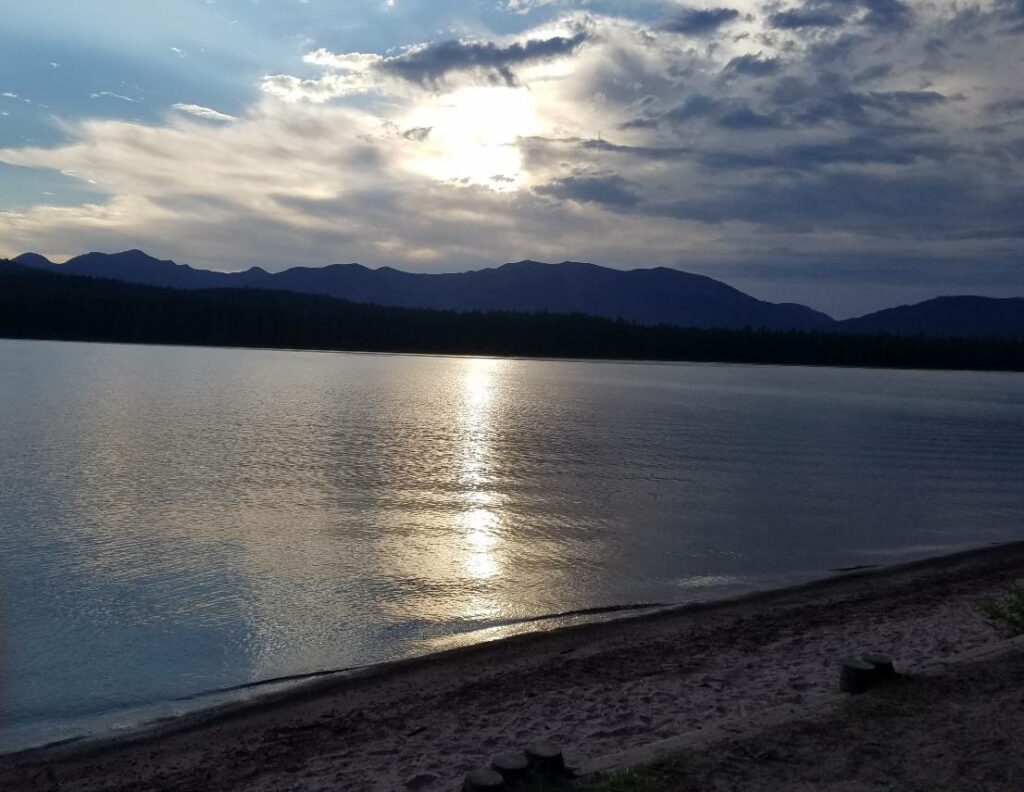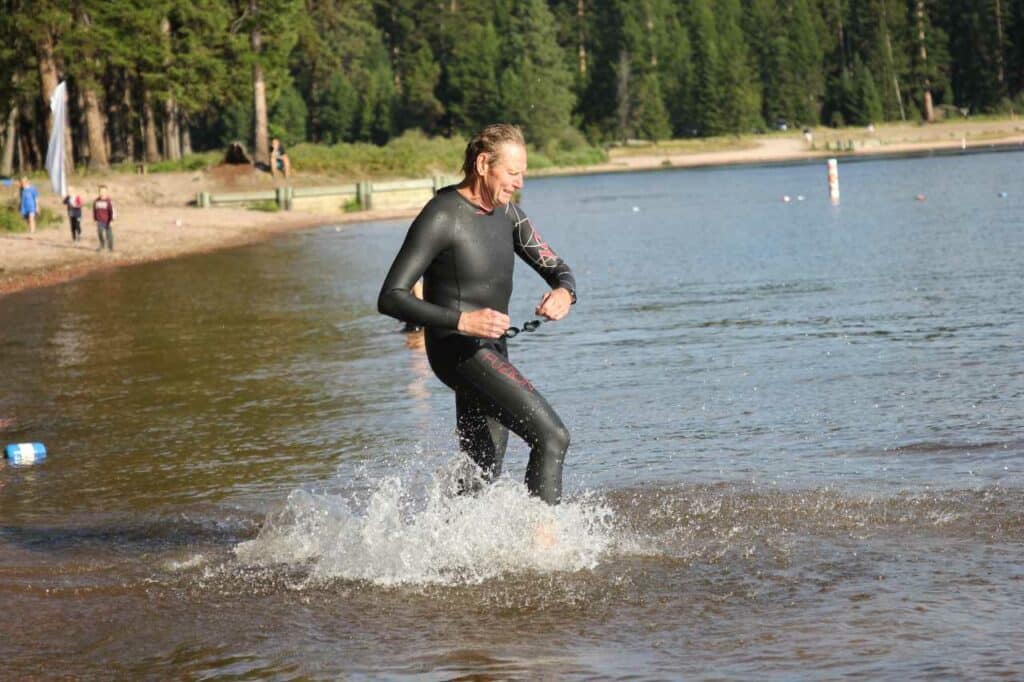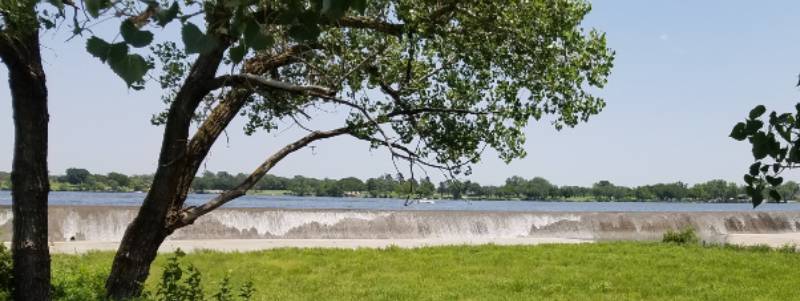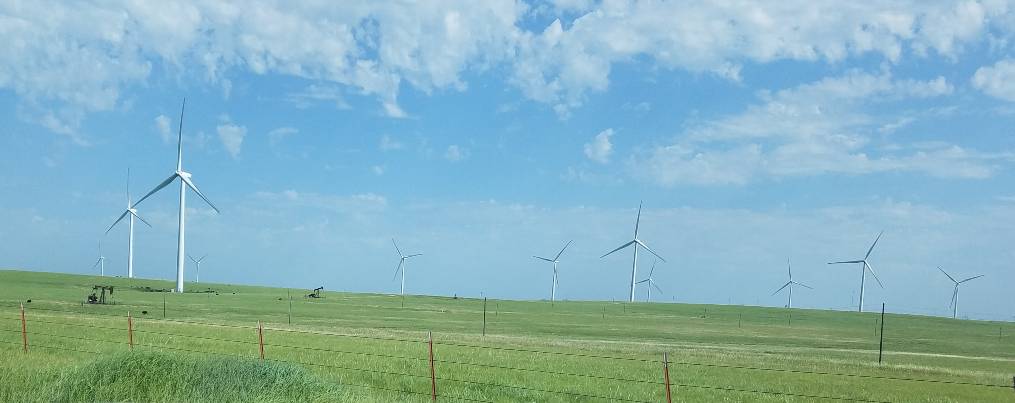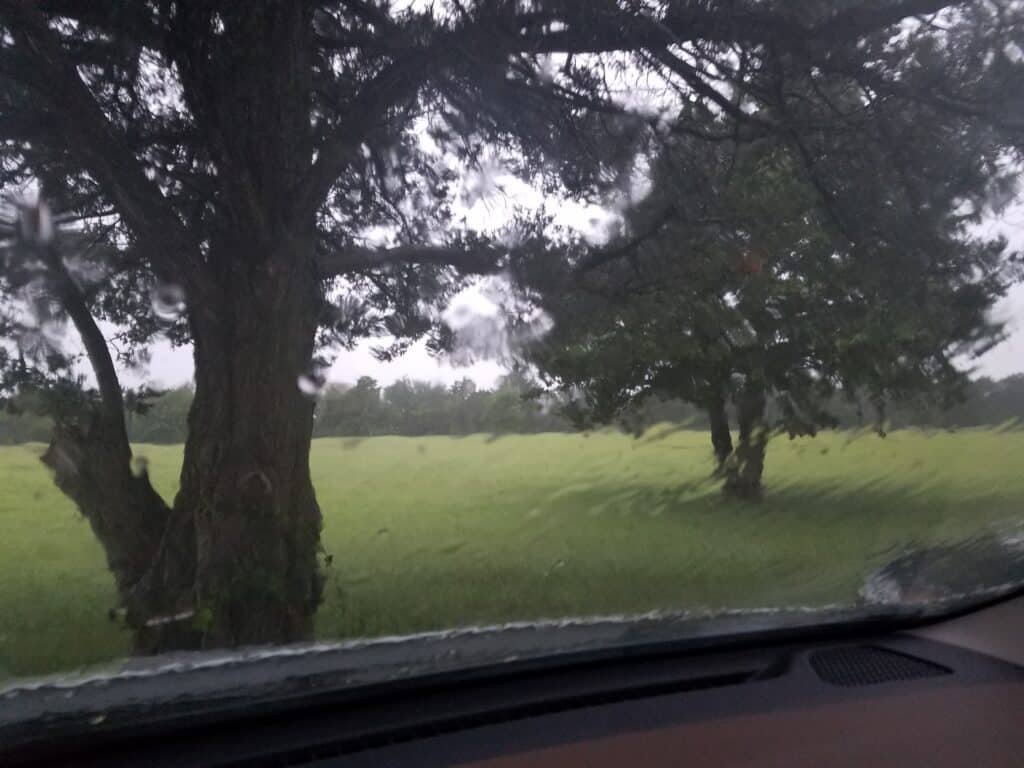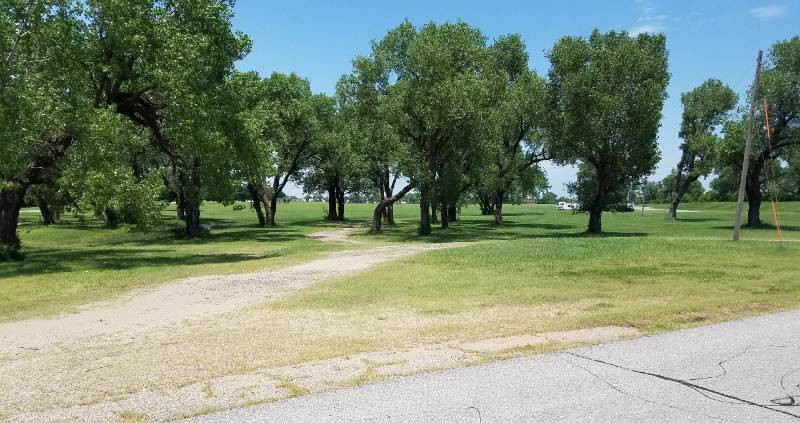Triathlon Across the USA: State #48 – Idaho
Preston, Idaho; July 30, 2022 – Preston Biathlon, Triathlon and Fun Run; Preston Aquatic Center.
Our Idaho triathlon represented the many triathlons in smaller communities across this country, which are managed and supported by local businesses to benefit local causes.
The Preston Triathlon was also the second of three triathlons in northwestern states during late July and early August. I completed the Donner Lake Triathlon outside Truckee, California, the previous weekend. The following weekend, we would be in Seeley Lake, Montana.
Before the Idaho Triathlon
A few days before the Idaho triathlon, we met up with our friends Steve and Lori at the Cub River Campground outside Preston. We camped in a rented Class C motorhome while our friends used theirs.
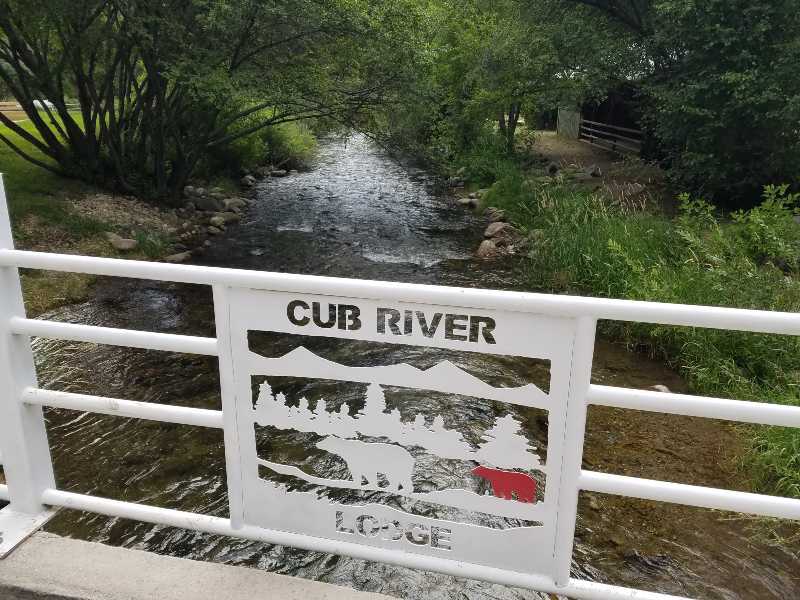
On Friday afternoon, we drove the 13 miles from our RV park into Preston. We went for two purposes. First, and probably expected, was to pickup my race packet.
The second reason, to complete the triathlon swim, is one you probably did not expect. Completing the swim on the day before the bike and run legs of the triathlon was a first.
A Vibrant Community
Between the swim and packet pickup, we checked out this rural community of just over 5,000 residents.
With Preston abuzz with the excitement of Rodeo Days and the nightly parades, we found the main street lined with people shopping at the outdoor displays of local shops and sampling the treats of street vendors.
While in Preston, we also stopped for groceries. The family-owned grocery store at which we shopped impressed us with their range of products and prices. The big corporate stores in larger cities have nothing on this local store.
Sadly, many towns the size of Preston have shriveled and died over my lifetime. Joy and I spent our early years, until high school graduation, in a small town in Minnesota. We remember when towns like our hometown were as vibrant as Preston.
10th (Maybe More) Annual Biathlon and Triathlon
The Preston Triathlon is one of several running and multisport events managed by Groll Family Fitness Center (Preston, Idaho). The center offers many services, including personal training, weight loss coaching, strength training, and group classes in aerobics and yoga.
According to Chris and Jeannine Groll, this event began as a biathlon (bike-run) event “ten, maybe twelve years ago”.
Since there was not a facility for swimming in Preston in the early years, it was impossible to hold a triathlon. However, that changed three years ago with the opening of the Preston Aquatic Center and its lap pool.
Today, the Preston event includes a sprint triathlon, biathlon (bike-run involving the distances of the triathlon), and 1 mile and 5 km ‘fun runs’.
The advertised distances for the individual legs of the sprint triathlon in which I competed were:
- Swim: 500 yards (457 meters) – Actual: 500 yards (457 meters)
- Bike: 14 miles (22.5 km) – Actual: 14.1 miles (22.6 km)
- Run: 5 km (3.1 miles) – Actual: 4.8 km (3 miles)
Actual distances shown above are from my Garmin Forerunner 920XT.
“Every Child A Swimmer”
The Preston biathlon, triathlon, and running event doubled as a fundraiser for the Preston Aquatic Center (PAC). Funds from this race support the “Every Child A Swimmer” scholarship fund for underprivileged children who want to learn to swim but whose parents cannot afford lessons.
One staff member of PAC told me, “I grew up in California and learned to swim when I was old enough to walk. I want every child who wants to learn to swim to have the opportunity.”
This is an example of causes supported by local triathlons and other multisport and running events.
Swim
With only two lanes in the PAC pool, competitors swam the 500 yards on Friday (my choice) or early on Saturday, before the start of the triathlon and biathlon. Each triathlete brought someone, in my case Steve, to count their laps, record their swim time, and report the time to a PAC staff member.
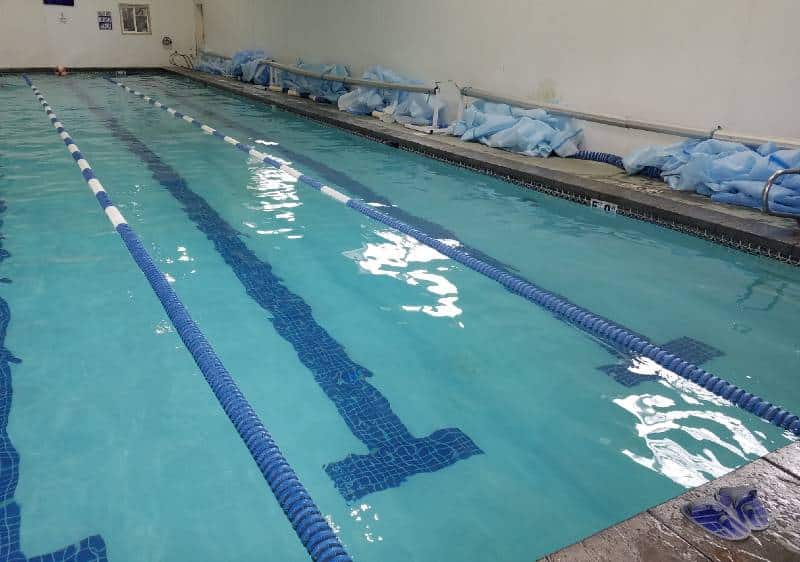
Bike
For Saturday’s bike and run legs for the triathlon and biathlon, race organizers converted the parking lot behind the Preston Aquatic Center into the transition area. Just before the race began, all competitors mounted their bike inside the transition area.
Following a ten-second countdown, we all left the transition. Our race officially began as we rode over the timing mat.
This race used a unique method for capturing our times as we crossed the timing mat. Typically, a timing chip is on a velcro strap attached to our left ankle. Some running races use a race number bib with the timing chip embedded in it.
For this race, the organizer gave each of us two plastic-encapsulated metal foils. We pinned one each on the left and right sides of our race number belt or shorts.
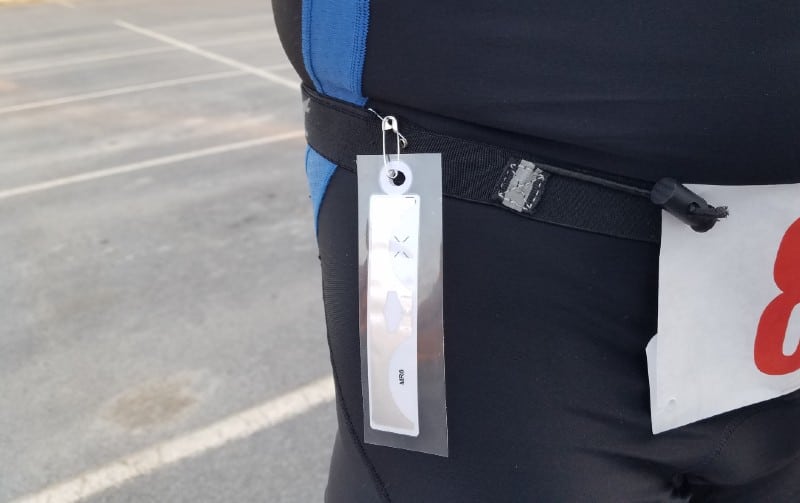
The bike course left the transition area using the alley behind the aquatic center. Upon reaching the street, volunteers directed us to turn left (east) onto Oneida Street.
A Ride in the Country
We followed the road out of Preston into the country with its rolling hills. The many volunteers made it easy for us to follow the course and its many turns. Because of this, we could enjoy the sights and smells of this gorgeous farmland.
Most of the ride was between hayfields interrupted only by the occasional small farm, many containing a mix of dairy and beef cows, goats, and horses.
We witnessed hay in various stages of maturity – from being irrigated to help its growth to that already cut and being raked to speed up its drying. At one point, the spray from the irrigation rig crossed the road. The mist felt good.
Throughout the bike leg, we rode in traffic with cars and trucks. There was also the occasional farming implement we encountered during the ride. This triathlon was the first in which I met a tractor pulling a hay rake, one wide enough to leave only six to eight feet for me to pass between it and the edge of the road.
Despite the plentiful traffic, I found the drivers to be considerate. At no time did I feel unsafe.
Following a rectangular loop at the midway part of the course, we soon reconnected with Oneida Street, meeting some of the apparent late-comers to the biathlon and triathlon. As we returned to the eastern edge of Preston, we saw those taking part in the 5 km fun run. They were on the course I would be in a few minutes.
Run
The flat run course followed part of the bike course on streets leading to the eastern edge of Preston. As with the bike course, we left the transition area through the alley onto Oneida Street.
Near the edge of town, we turned left to follow a rectangular path that included three left turns. Upon reaching Oneida Street near the post office, we turned right and returned to the finish line.
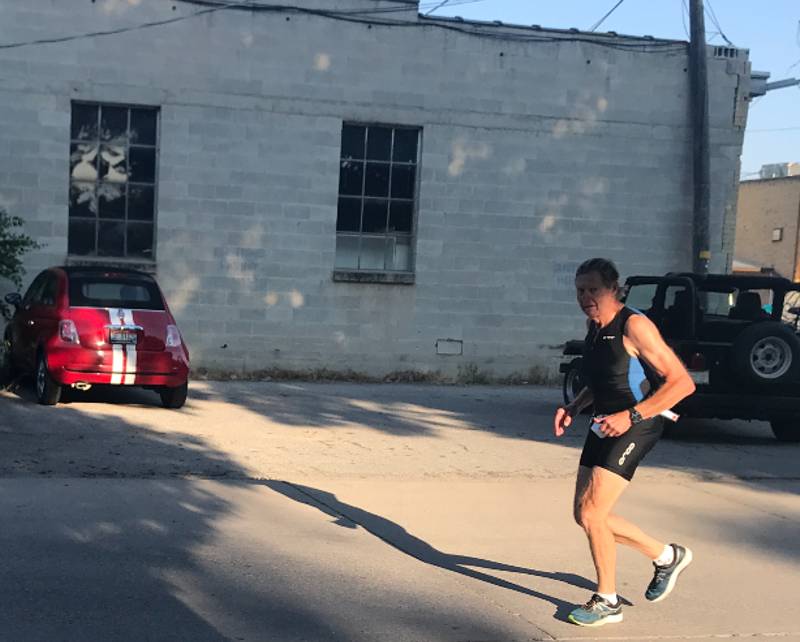
After the Idaho Triathlon
After the Preston Triathlon, Joy and I traveled with our friends Steve and Lori in our two motorhomes toward our next destination, Montana, for the Seeley Lake Triathlon.
The trip to our first stop, Dillon, Montana, initially took us past the bright green alfalfa fields around Preston. These soon gave way to bright yellow fields of canola (rapeseed) then to massive fields of potatoes with their vibrant purple flowers.
A short stretch of lava fields reminiscent of the big island of Hawaii led to more potatoes and corn. It wasn’t long before we were driving past grassy areas with grazing cattle.
We soon reached our destination for the next two nights, the Southside RV Park in Dillon. Our campsite, next to a small river, was the perfect spot from which to watch the life of an osprey family – dad, mom, and two young ones.
Race Firsts
- First time doing the swim leg on the day before the bike and run legs.
- First time using a method of timing with metal flags, one pinned to each side.
- Being sprinkled by an irrigation system used to water a hay field was a first.
What Size Triathlon Do You Prefer?
Triathlons with many competitors are exciting. Often, we see others with whom we have raced before. On the other hand, small races are more intimate and often support important local causes.
Which do you prefer? (There is no wrong answer.)
Share your thoughts in the Comments below.

